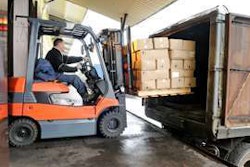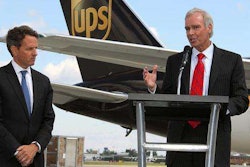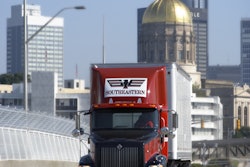U.S. Xpress has embraced cloud computing as a way to give employees critical job information while away from their desks or from the cab.
The company developed mobile applications for each type of mobile worker — drivers, salespeople, managers, executives, etc.—based on their information needs. For drivers, management looked at what information would help them to best utilize their personal time and on-duty driving time.
The consensus was to give drivers access to time-sensitive and interactive dispatch information outside the cab. The company developed identical apps for the iPhone and Android platforms.
U.S. Xpress uses the DriverTech Truck PC onboard computing platform in its vehicles. While in the cab, drivers can view current load information, upcoming assignments, and interact with the touchscreen display to accept and respond to load offerings. The same features are available using the mobile app.
The app can be downloaded through iTunes and Google Play. Once a driver downloads the app to a personal device, they have to go through a registration process. U.S. Xpress’ automatically verifies the drivers are registered in its host system and continues to verify active status. Dispatch information is broadcast to drivers’ personal devices as a notification alert.
During the process of developing the apps, management carefully evaluated the type of data it would exchange with users and what this data meant for the organization.
“Dispatch really doesn’t have that much information that you would need to be secure,” says Ken Crane, director of IT operations for U.S. Xpress. “So far, with the type of information we are providing drivers, we are comfortable relying on the carrier-provided networks for encryption, guaranteed delivery, etc.”
For the future, the company is looking at developing a Web interface for most of its software applications. This would enable users, including customers, to pull information into personal devices for display purposes only. U.S. Xpress would retain the data in its host system.
A true cloud model, where applications can run on virtually any hardware device, is not being considered for the in-cab environment, Crane says. Having hardware that is integrated with the vehicle is critical to ensure that hours-of-service, shipment tracking and other information used to manage compliance, safety and customer service is as reliable as possible, he says.
“There are a lot of challenges for mobility to replace in-cab computers,” he says, adding that a hybrid approach works best by “taking the in-cab system and extending its radius and ability to convey information to the driver so he is not bound within the constraints of the cab.”













